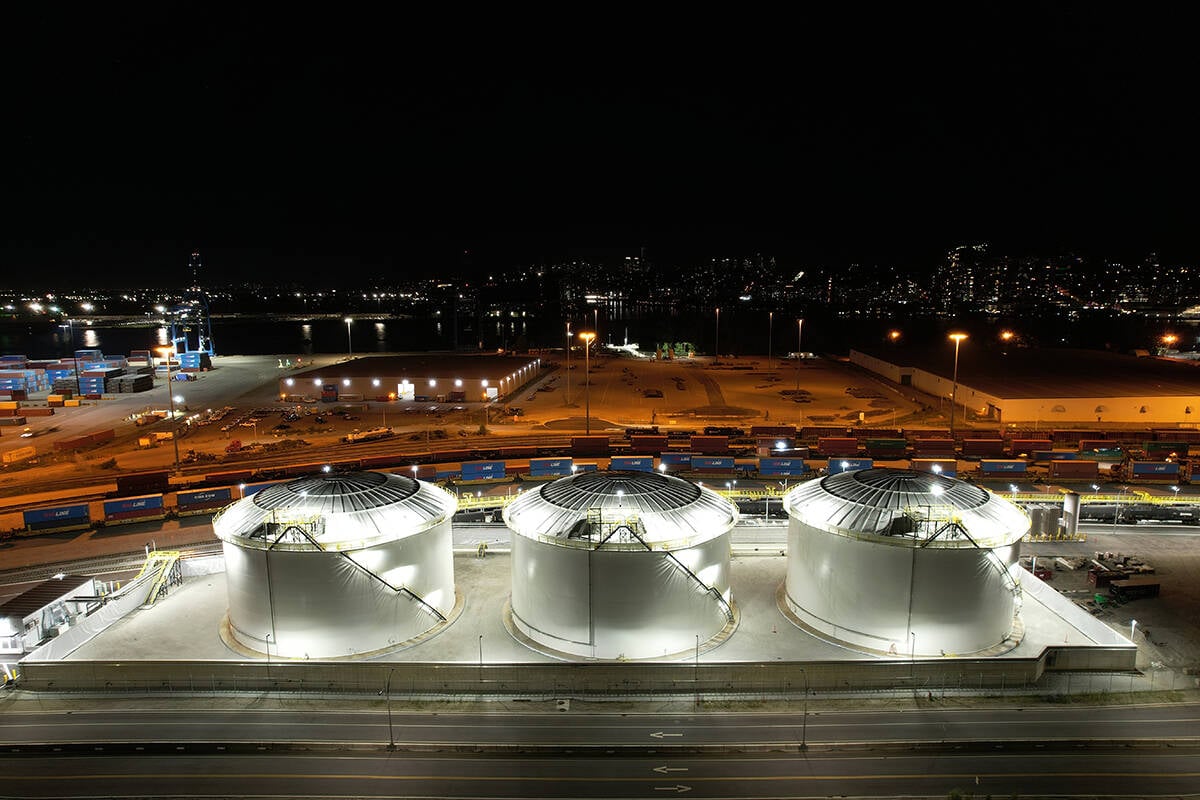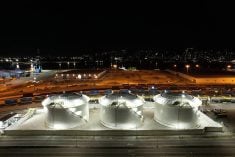Something smelled different about the Saskatoon Exhibition this year.
Generally, it went unnoticed, but one local TV broadcaster smiled about the change during a supper hour news show.
“I have to admit, in all due respect, it’s kind of nice this year not to have that agricultural component because you can walk into the buildings inside and there isn’t that, well, pungent aroma,” he said.
Indeed, the smell, the cattle, the show ring and the producers who normally make up part of the exhibition were gone.
Read Also

Canola oil transloading facility opens
DP World just opened its new canola oil transload facility at the Port of Vancouver. It can ship one million tonnes of the commodity per year.
Exhibition staff said there had been a lot of livestock, competitions and producers recently at the grounds during the Country In The City show, and the exhibition association decided to concentrate its agricultural efforts there, as well as at its other shows during the year.
There didn’t need to be agriculture at the main exhibition itself, said Mark Regier, who coordinates agriculture shows at the Saskatoon Prairieland Exhibition.
When agriculture gets mixed in with the rest of the exhibition, it isn’t given enough space. Stand-alone shows work better, Regier said. In fact, the recent 4-H show had a record number of participants.
And agriculture shows, like stock shows, aren’t too interesting to city people.
“People aren’t really looking for it,” said Regier.
The exhibition association hasn’t decided whether to include agriculture next year, but it would like to hold some country-theme events in the future.
“We still want to bring that component to the fair.”
Agriculture was always a part of the Saskatoon Exhibition, as it had been at exhibitions across Canada, though over time it has played a diminishing role. Most summer exhibitions began as agricultural fairs, which farmers and their families attended to see the best in purebred and commercial cattle and where they learned new agricultural techniques.
Fewer farmers, less interest
But as cities have grown and the urban population increased while farmer numbers waned, the interest in the agricultural events has declined.
“They all held ag fairs that just sort of died out when urbanization took over,” said Keith Dryden, retired longtime editor of The Western Producer.
It isn’t just the urban interest that has faded, said Dryden. Farm people too have become less interested in livestock shows as they’ve specialized in grain farming and gotten rid of the milk cow, the chickens and the family horse.
The healthiest summer fairs that still include agriculture are out in the countryside, where farming is a way of life, he said.
Of course, Western Canada’s biggest summer exhibition, the Calgary Stampede, is agriculture-based.
And Regina’s exhibition seems an exception, too. It still has a hefty agriculture component.
This year there was barrel racing, bull-riding, high school rodeo championships and heavy horse pulls, as well as a miniature horse show.
“It’s a popular thing,” said Garth Wright, the exhibition’s agricultural co-ordinator.
Though some city people don’t like that pungent aroma of livestock, Wright said the Regina exhibition plans to make an even bigger stink out of it next year.
“We’re thinking of moving (the animals) closer to the midway so it’s easier for people to get to them,” said Wright.

















